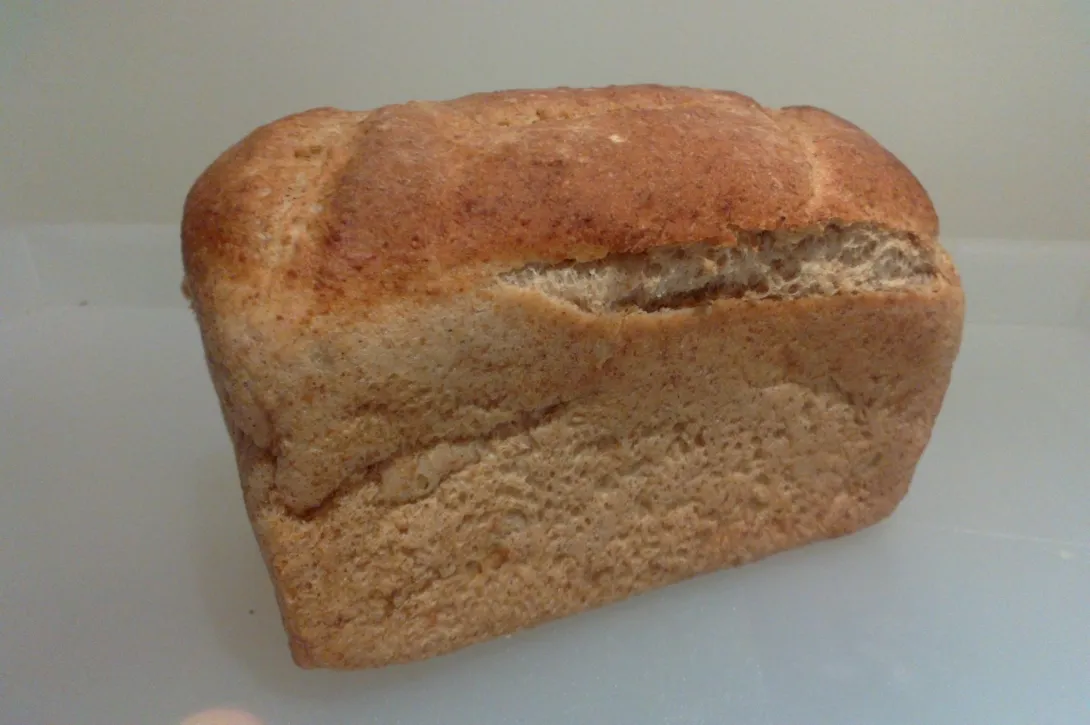
After last weeks Rye Soda bread the starter is ready! It didn't take long and was so easy, just a couple of days of refreshments (RYe flour mixed with tap water to a paste) and it was doubling in size within hours. I don't know if the conditions in South England are ideal or whether using fresh organic Rye flour is a sure fire technique but it amazes me how easy it seems to be to get a working starter.
I decided for my first proper bread I'd go for a Wheaten Rye, from the Recipe in Dan Lepard's Exceptional Bread Book. I'd made it before and it's a good compromise loaf being mainly white flour producing a nicely risen crumb but with some flavour from the rye and extended proove times.
The loaf was great, a hit with me and the OH although maybe a little under risen. One thing that did make me wonder was the use of sourdough culture and dried yeast. The book itself is great with a wide variety of interesting recipes and instructions for the home baker (such as hand kneading etc.) The only thing is that it often appears over complicated. This recipe for instance calls for making sponge with dried yeast then later on adding a rye culture. It is not clear what the benefit of using two yeasts is, does the bakers yeast contribute to the flavour at all? does the Rye culture contribute to the leaven? I feel an experiment is needed. Does anyone use both Bakers yeast and a sourdough culture in the same bake? If so why?
- overnight baker's Blog
- Log in or register to post comments
Commercial yeast alone contributes very little flavor (virtually none when compared with naturally leavened bread), in a preferment such as the sponge you made, if allowed to ferment to maturity I suppose it would add a bit more flavor. mixing commercial yeast and natural levain gives you a lot of the flavor depth of full on sourdough with the more time friendly benefits of using commercial yeast.
bakers with books put commercial yeast in SD bread because they don't know how active someone else's is and they don't want folks having failures and bad mouthing them on the Internet:-) I know some amateur bakers, and pro'stoo, do this because they don't think their starter can do the job alone - no faith. Heavier, more wholegrain breads might need some more lift or need a more open crumb so they don't end up like 'lead bread'.
When ever I see it in a recipe, 70% of the time I just leave it out. If it has a large amount of whole grains, i will usually replace it with a yeast water levain or I might make a small ADY poolish with a pinch of yeast to try to get some flavor out of it. But SD alone can raise anything if it is fit and at its peak.
Happy Baking
I've also read that when your working with a high proportion of whole grain the added yeast is to boost the final fermentation which is necessary with fragile gluten networks. Otherwise the heavy loaf won't finish its rise before the gentle gluten starts to break down. To put all that time (sure mostly waiting) and have your loaf come out heavy is a huge let down. This is particularly with loaves with excessive whole grain (I'd say no less than 50%).
Experiments in order. Maybe i'll try a copy formula next week with 60% mixed whole grain. 1/2 with added yeast and 1/2 dependent on the natural culture only and see the differences.
Josh